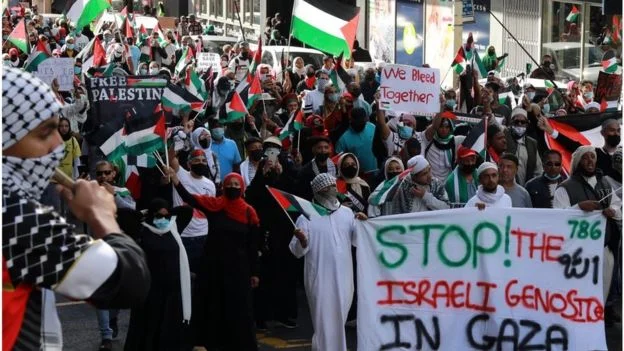In the realm of complex geopolitical conflicts, few are as enduring and multifaceted as the Hamas-Israel conflict. This article aims to unravel the intricate tapestry of events, emotions, and aspirations that have shaped this ongoing struggle. We’ll dive deep into its historical roots, significant turning points, and the implications it holds for the world today. So, dear reader, join us on this enlightening journey through the tumultuous history of the Hamas-Israel conflict.
Table of Contents
- Introduction to the Conflict
- The Birth of Hamas
- Israel’s Founding and Early Years
- Rise of the Palestinian Liberation Organization (PLO)
- The First Intifada: A Cry for Freedom
- The Oslo Accords: A Glimmer of Hope
- Second Intifada: The Escalation of Violence
- Hamas Gains Ground
- Gaza Strip: A Hotbed of Tension
- Israeli-Palestinian Peace Efforts
- The Role of External Powers
- Challenges and Stalemates
- The Humanitarian Crisis
- Conclusion: A Long and Winding Road
- Frequently Asked Questions (FAQs)
1. Introduction to the Conflict
The Hamas-Israel conflict, often referred to as the Israeli-Palestinian conflict, is a protracted struggle between two parties with deeply entrenched grievances. On one side stands Israel, a nation born out of the ashes of World War II, seeking security and legitimacy. On the other side, we find the Palestinian people, longing for self-determination and an end to occupation.
2. The Birth of Hamas
Hamas, an acronym for “Harakat al-Muqawama al-Islamiya” or Islamic Resistance Movement, emerged in the late 1980s as a reaction to the Israeli occupation of Palestinian territories. Initially, it operated primarily as a social service organization but later turned to armed resistance.
3. Israel’s Founding and Early Years
In 1948, the state of Israel was officially established, leading to widespread displacement of Palestinian Arabs. This event laid the groundwork for decades of tension and conflict in the region.
4. Rise of the Palestinian Liberation Organization (PLO)
The PLO, under the leadership of figures like Yasser Arafat, became a prominent voice for Palestinian rights and statehood. However, negotiations with Israel often stalled.
5. The First Intifada: A Cry for Freedom
The late 1980s saw the outbreak of the First Intifada, a popular uprising by Palestinians against Israeli rule. This marked a significant turning point in the conflict.
6. The Oslo Accords: A Glimmer of Hope
In 1993, the Oslo Accords raised hopes for peace with mutual recognition between Israel and the PLO. However, the peace process faced numerous obstacles.
7. Second Intifada: The Escalation of Violence
The Second Intifada, starting in 2000, brought a new wave of violence to the region, leading to thousands of casualties on both sides.
8. Hamas Gains Ground
Hamas’s electoral victory in Gaza in 2006 signaled a shift in Palestinian politics, further complicating the path to peace.
9. Gaza Strip: A Hotbed of Tension
Gaza, a small strip of land along the Mediterranean, has been a focal point of conflict due to its dense population and political instability.
10. Israeli-Palestinian Peace Efforts
Numerous peace talks and negotiations, including the Camp David Summit and Annapolis Conference, have aimed to resolve the conflict but often ended in frustration.
11. The Role of External Powers
Various countries and international organizations have played roles in mediating or exacerbating the conflict, adding complexity to an already intricate situation.
12. Challenges and Stalemates
Both parties face significant challenges in achieving their respective goals, including issues related to borders, settlements, and the status of Jerusalem.
13. The Humanitarian Crisis
The conflict has led to a humanitarian crisis, with countless Palestinians and Israelis suffering from its consequences.
14. Conclusion: A Long and Winding Road
In conclusion, the Hamas-Israel conflict is a saga of historical grievances, missed opportunities, and ongoing strife. Finding a peaceful resolution remains a daunting challenge, but it is essential for the well-being and stability of the region.
15. Frequently Asked Questions (FAQs)
Q1: What is the root cause of the Hamas-Israel conflict?
The root cause of this conflict lies in the historical displacement of Palestinian Arabs during Israel’s founding in 1948 and the subsequent struggle for territory and self-determination.
Q2: Can the conflict ever be resolved peacefully?
While achieving a peaceful resolution is incredibly challenging, it remains possible through diplomacy, compromise, and international cooperation.
Q3: How has the conflict affected the lives of ordinary Palestinians and Israelis?
The conflict has brought about immense suffering for both Palestinians and Israelis, with casualties, displacement, and economic hardship.
Q4: What role do neighboring countries play in the conflict?
Neighboring countries often influence the conflict, either by supporting Palestinian factions or engaging in diplomatic efforts to broker peace.
Q5: What is the international community doing to address the conflict?
The international community has made various attempts to mediate and address the conflict, including providing humanitarian aid and advocating for a two-state solution.
In this article, we’ve delved into the intricate history of the Hamas-Israel conflict, providing you with a comprehensive understanding of its origins, evolution, and the challenges it continues to pose. As we strive for a more peaceful world, it is crucial to remain informed about such complex issues and explore avenues for a just and lasting resolution.









